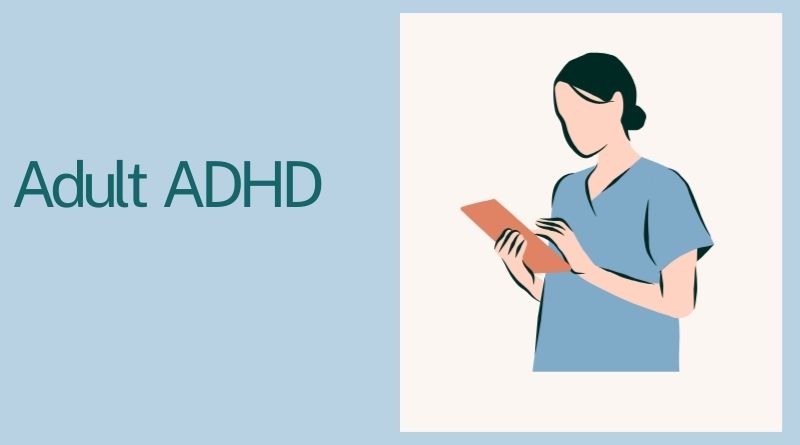Understanding ADHD in Adulthood
ADHD in Adulthood: A Complex Reality
Traditionally, ADHD has been viewed as a childhood disorder, primarily diagnosed in school-age children. However, it’s increasingly recognized that the condition doesn’t always fade away with age. Some individuals may only display symptoms of ADHD for the first time in adulthood. These late-onset cases or undiagnosed childhood cases can significantly impact an individual’s life, including their relationships, work, and overall well-being.
The Development of Adult ADHD: Factors and Causes
Understanding why ADHD symptoms may emerge or persist in adulthood is a complex endeavor, as it involves multiple contributing factors. While the exact causes remain elusive, several key factors have been identified:
- Genetics: Genetic predisposition plays a crucial role in the development of adult ADHD. If you have a family history of ADHD or related conditions, you may be at a higher risk of developing it as an adult.
- Neurobiological Factors: Changes in the brain’s structure and function can contribute to adult ADHD. Neuroimaging studies have revealed differences in the brain’s frontal cortex, which is responsible for executive functions such as attention, impulse control, and decision-making.
- Environmental Factors: Childhood trauma, chronic stress, exposure to toxins, and certain prenatal factors can increase the risk of adult ADHD. Adverse life events may trigger the onset of symptoms in susceptible individuals.
- Hormonal Changes: Hormonal fluctuations, such as those experienced during pregnancy or menopause, can affect neurotransmitter levels in the brain and potentially lead to ADHD-like symptoms.
- Coexisting Conditions: Adults with other mental health conditions, such as anxiety or depression, may be more susceptible to developing or exacerbating ADHD symptoms.
- Lifestyle Factors: Poor sleep, unhealthy diet, lack of exercise, and high levels of stress can contribute to attention and impulse control issues, potentially mimicking ADHD symptoms.
Difference in child vs adult ADHD
Childhood ADHD (Attention-Deficit/Hyperactivity Disorder) and adult ADHD share some common characteristics but also exhibit differences due to the developmental stages and life contexts in which they occur. Here are some key distinctions between child and adult ADHD:
- Age of Onset:
- Child ADHD: Symptoms typically manifest in childhood, often before the age of 12. These symptoms can be present from an early age, affecting academic performance and social interactions.
- Adult ADHD: While some individuals continue to experience symptoms from childhood into adulthood, others may not recognize ADHD until later in life. Symptoms can emerge or become more pronounced during adolescence or adulthood.
- Hyperactivity and Impulsivity:
- Child ADHD: Children with ADHD often display prominent hyperactivity and impulsivity. They may be fidgety, have difficulty staying seated, interrupt others, and act without thinking.
- Adult ADHD: Hyperactivity tends to decrease with age in individuals with ADHD. Adults may experience inner restlessness rather than external hyperactivity. Impulsivity may manifest as impulsive decision-making or difficulty inhibiting immediate reactions.
- Inattention:
- Child ADHD: Inattention symptoms in children may lead to difficulties in staying focused on tasks, following instructions, and organizing schoolwork.
- Adult ADHD: Inattention remains a core feature of adult ADHD, but the context shifts from school to work and daily life. Adults may struggle with organizing tasks, managing time, and sustaining attention in professional and personal settings.
- Educational Challenges:
- Child ADHD: Academic difficulties are often a primary concern in children with ADHD. They may struggle with homework, test-taking, and classroom behavior.
- Adult ADHD: Educational challenges in adults may include difficulties with time management, procrastination, and maintaining focus in academic or vocational pursuits.
- Relationship and Occupational Impact:
- Child ADHD: Children with ADHD may experience challenges in peer relationships and family interactions. Academic performance and behavior in school can be significant concerns.
- Adult ADHD: Adult ADHD can affect various aspects of life, including relationships, employment, and overall functioning. Adults may encounter difficulties in maintaining stable relationships and may struggle in their careers due to organization and time management issues.
- Self-Awareness:
- Child ADHD: Younger children with ADHD may have limited self-awareness of their condition. They often rely on adults, such as parents and teachers, for guidance and support.
- Adult ADHD: Adults with ADHD often have a greater level of self-awareness and may seek diagnosis and treatment independently. Recognizing the impact of ADHD on their daily life, relationships, and work is a common motivation for seeking help.
- Treatment and Coping Strategies:
- Child ADHD: Treatment for child ADHD typically involves behavioral therapy, educational interventions, and, in some cases, medication. Parents play a central role in managing their child’s condition.
- Adult ADHD: Treatment options for adults with ADHD include behavioral therapy, medication, and counseling. Adults often take a more active role in managing their condition, seeking strategies to improve executive function and coping skills.
It’s important to note that ADHD is a lifelong condition, and while the presentation may change across the lifespan, its impact on daily functioning and well-being can persist into adulthood. Accurate diagnosis and tailored interventions are crucial for individuals of all ages with ADHD to help them manage symptoms and lead fulfilling lives.
Diagnosing Adult ADHD
Diagnosing adult ADHD is a complex process that typically involves a thorough evaluation by a qualified mental health professional. The process may include a review of the individual’s developmental history, self-reported symptoms, and assessments to rule out other medical or psychological conditions.
Treatment and Management
Once diagnosed, treatment options for adult ADHD can be similar to those for children. These may include:
- Behavioral Therapy: Cognitive-behavioral therapy (CBT) and psychoeducation can help adults develop coping strategies and improve time management, organization, and attention skills.
- Medication: Stimulant medications, such as methylphenidate and amphetamine-based drugs, are commonly prescribed to manage ADHD symptoms in adults. Non-stimulant medications like atomoxetine may also be considered.
- Lifestyle Modifications: Implementing healthy lifestyle changes, such as regular exercise, a balanced diet, and stress reduction techniques, can complement other treatments and improve symptom management.




